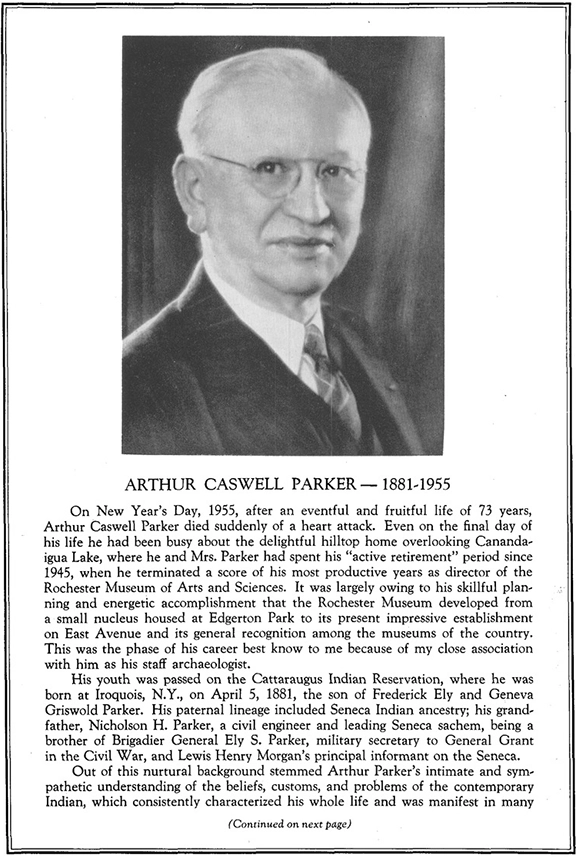Reposted from History.com. By History Editors
Native American Heritage Month is a federal observance held each November to honor American Indians and Alaska Natives. Congress first recognized the designation in 1990, and presidents have issued subsequent proclamations every year through 2024.
Early Origins of Native American Heritage Month
Efforts to formally recognize Native Americans began in the early 20th century. Arthur Caswell Parker, a Cattaraugus Seneca historian, laid the groundwork for later federal observances when he helped launch the Society of American Indians in 1911 and convinced the Boy Scouts to recognize a “First Americans Day” from 1912 to 1915.
In 1914, the Reverend Red Fox James of the Blackfeet tribe rode approximately 4,000 miles to petition President Woodrow Wilson to establish a national “Indian Day.” Wilson made no known proclamation then or the following year, when James returned, delivering endorsements from 24 governors.
However, states began setting their own observances around this time. In 1916, New York became one of the first states to mark “American Indian Day” after advocacy by Parker and the Congress of the American Indian Association, according to the Bureau of Indian Affairs. In 1924, Congress passed the Indian Citizenship Act granting U.S. citizenship to Native Americans born in the United States.

California followed suit in 1939 with an “Indian Day,” and, in 1968, Governor Ronald Reagan created a “California Indian Day” (the Legislature made Native American Day a state holiday in 1998). National steps followed, including a 1976 proclamation by President Gerald Ford designating a “Native American Awareness Week,” Reagan, as president, establishing an “American Indian Day” in 1983 and Congress creating the first “American Indian Week” in 1986. Reagan’s Proclamation 5577 supporting that effort stated that Native Americans were the country’s first settlers and explorers.
“Indians make contributions in every area of endeavor and American life, and our literature and all our arts draw upon Indian themes and wisdom,” the proclamation reads. “Countless American Indians have served in our Armed Forces and have fought valiantly for our country.”
According to the Library of Congress, a second “American Indian Week” followed in November 1987. In 1988, renamed “National American Indian Heritage Week,” it was moved to September to coincide with the harvest season. In 1989, President George H.W. Bush proclaimed December 3-9 “National American Indian Heritage Week.”
Expansion to Month long Federal Recognition
Congress passed a joint resolution in 1990 to dedicate a full month of recognition to Native Americans. Bush, in turn, issued a proclamation designating November 1990 as “National American Indian Heritage Month.” Similar presidential proclamations continued through 2024.
“Today we reaffirm our support for increased Indian control over tribal government affairs, and we look forward to still greater economic independence and self-sufficiency for Native Americans,” Bush’s 1990 proclamation stated.
Additionally, Congress created Native American Heritage Day on the Friday after Thanksgiving in 2009 under the Native American Heritage Day Act. This established observance but did not make it an official federal holiday.
Goals and Significance
The goals of Native American Heritage Month include educating the public about Indigenous histories and cultures, recognizing tribal sovereignty, preserving cultural traditions and languages and honoring contributions in areas such as military service, arts, science and governance.
According to the U.S. Census Bureau, as of 2023, there were 574 federally recognized tribes in the United States and 7.4 million American Indian and Alaska Natives, making up 2.2 percent of the population.
Throughout November, communities, schools and institutions host a variety of events, including museum exhibits showcasing Indigenous art and history and educational programs and curriculum in schools. Other events include public readings, storytelling events, film screenings, festivals and community gatherings.
“This month is a time to honor the legacy of our ancestors, but every day we should stop to think about our country’s beginning, and that the U.S. would not exist if not for a great deal of sacrifice, blood and tears by Indian Tribes across the country,” former U.S. Congresswoman Deb Haaland (D-N.M.) of the Pueblo of Laguna, told The New York Times in 2018.
The first Native American to serve as cabinet secretary, Haaland added that Native Americans have much to celebrate. As she told the Times, “The songs, dances, culture and traditions surrounding planting and harvests, the prayers that are sent upward for healing and peace, and the welcoming of children into our families, are all reasons for us to keep moving forward with optimism.”




